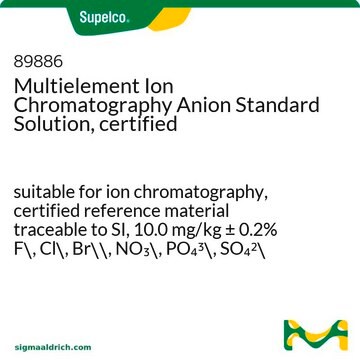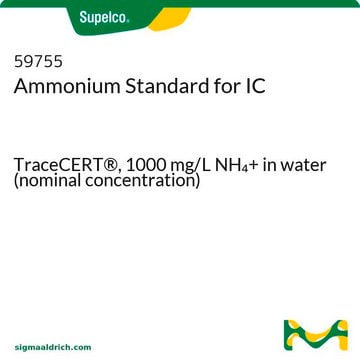112704
Formaldehyde-sodium bisulfite adduct
95%
Synonym(s):
Sodium formaldehyde bisulfite
About This Item
Recommended Products
Assay
95%
form
solid
mp
200 °C (dec.) (lit.)
SMILES string
O=S(CO)([O-])=O.[Na+]
InChI
1S/CH4O4S.Na/c2-1-6(3,4)5;/h2H,1H2,(H,3,4,5);/q;+1/p-1
InChI key
UOULCEYHQNCFFH-UHFFFAOYSA-M
Related Categories
General description
Application
- Triethyl citrate as a non-toxic solvent in pharmaceutical applications: Explored the use of Triethyl citrate in in-situ forming PLGA implants, focusing on its role as a less toxic solvent compared to traditional options. This application demonstrates the importance of Triethyl citrate in developing safer pharmaceutical formulations (Ramos et al., 2024).
- Triethyl citrate in biodegradable polymer research: Examines the influence of Triethyl citrate on the melt spinning and structural properties of poly(lactic acid) fibers. This study highlights its effectiveness as a plasticizer, enhancing the processability and properties of biodegradable polymers, relevant for controlled drug release systems (Gzyra-Jagieła et al., 2024).
Storage Class Code
11 - Combustible Solids
WGK
WGK 1
Flash Point(F)
Not applicable
Flash Point(C)
Not applicable
Personal Protective Equipment
Regulatory Listings
Regulatory Listings are mainly provided for chemical products. Only limited information can be provided here for non-chemical products. No entry means none of the components are listed. It is the user’s obligation to ensure the safe and legal use of the product.
JAN Code
112704-VAR:
112704-5KG:
112704-5G:
112704-100G:
112704-2KG:
112704-BULK:
Certificates of Analysis (COA)
Search for Certificates of Analysis (COA) by entering the products Lot/Batch Number. Lot and Batch Numbers can be found on a product’s label following the words ‘Lot’ or ‘Batch’.
Already Own This Product?
Find documentation for the products that you have recently purchased in the Document Library.
Customers Also Viewed
Our team of scientists has experience in all areas of research including Life Science, Material Science, Chemical Synthesis, Chromatography, Analytical and many others.
Contact Technical Service










